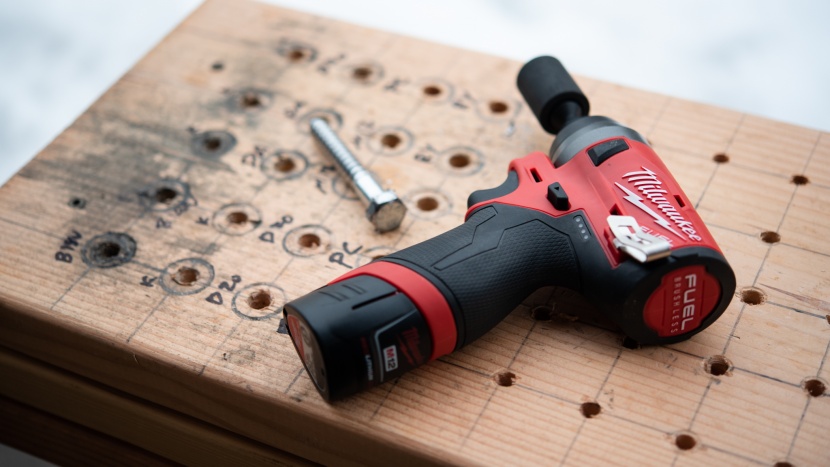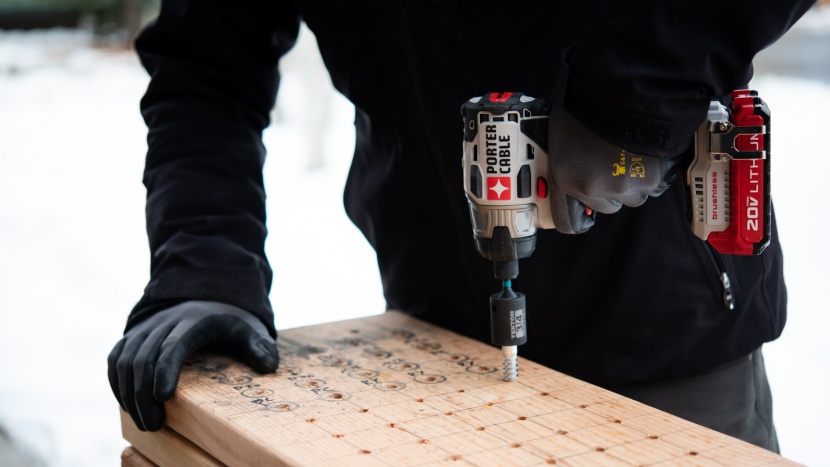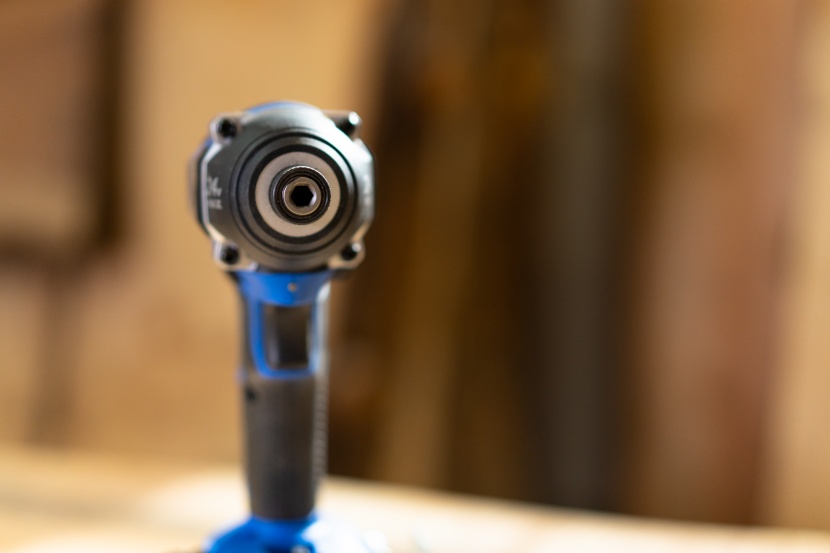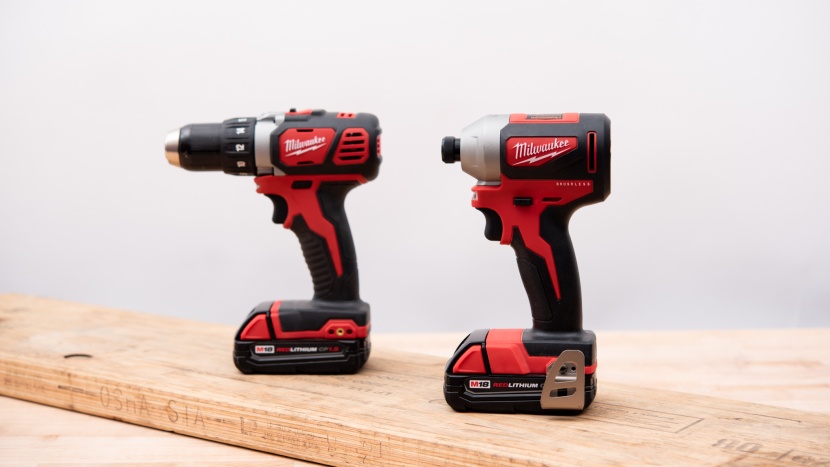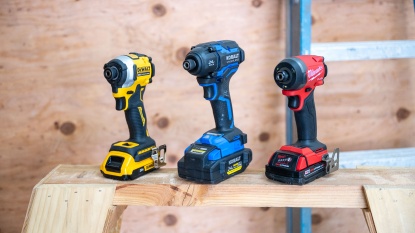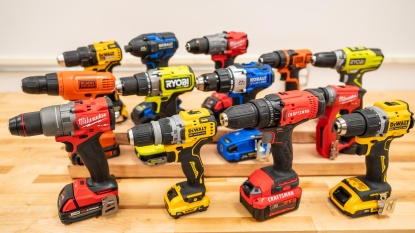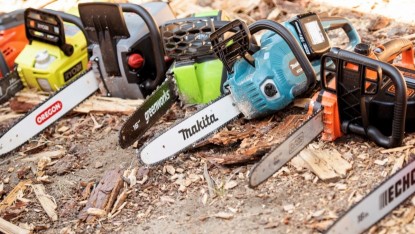Once you have a few DIY projects under your belt with your trusty drill, you might be wondering whether it's time to add a top-rated impact driver to your arsenal of tools — or you might be wondering what an impact drive even is. To help you decide if this should be your next tool purchase, we've put this guide together after dozens and dozens of hours of extensive side-by-side impact driver testing. We go over what these tools do, how they are different than a regular or hammer drill, their pros and cons, and what you should look for when shopping for one.
What is an Impact Driver? What Does it Even Do?
An impact driver essentially does the same things that a drill can do. They both can drive in screws and drill holes, so you are probably wondering why you even need a second drill-shaped tool. The answer is that an impact driver does all these things better.
It does this by adding a percussive impact force in addition to rotational torque. Impact drivers have a clutch that disengages and then re-engages to let the motor build momentum and slam the bit forward. They don't turn continuously, having a series of discrete hits to drive a screw in or drill a hole. This gives it considerably more torque — think about the difference between trying to push a nail in with a hammer versus hitting it with a hammer.
This is primarily beneficial for driving fasteners but can also help when using larger bits to drill big holes. However, these products generally don't have adjustable chucks like a drill/driver combo, so not all your existing bits may work.
Impact Driver vs. Hammer Drill
In your search for a new impact driver, you may also have come across hammer drills and might even have thought that they are the same thing. While both tools use a percussive action for more power, a hammer drill directs this force into whatever you are drilling, like a jackhammer. This tool is most commonly used for drilling into brick or stone, as masonry bits work much better with the addition of forward impacts. Hammer drills usually have a switch to disable the hammering action, but these tools are even more of a niche item than an impact driver — it's mainly important that you don't mix them up when shopping for a new one. Otherwise, you will be sorely disappointed.
Step 1: Do You Need an Impact Driver?
Honestly, you don't necessarily need an impact driver since a drill/driver can essentially do the same thing. If you have a limited tool budget, we would even caution against getting an impact driver since your money could probably be better spent on another type of tool with wider capabilities.
However, you may find that you can't live without one of these tools once you start using them. These tools can effortlessly drive in long screws to the toughest of materials without stripping their heads. The increased torque and lower RPMs allow you to drive in screws one-handed and make it so easy that you won't want to go back to your typical drill for driving fasteners in once you get an impact driver.
An impact driver can make your DIY projects more efficient, streamlining your workflow by letting you drill pilot holes with your drill, then swap to your impact driver to drive the screw in. In summary, you probably don't have to buy an impact driver, but they sure are handy tools to have around if you tackle home projects regularly.
Step 2: Which Bit Holder is Best for You?
The next biggest differentiating factor about impact drivers is what kind of bits they can hold. Predominantly, these tools are all designed to hold the standard ¼" hex bit, and you would be hard-pressed to find an impact driver that doesn't hold these bits — it's essentially the defining factor of an impact driver.
However, there are a few brands that have also incorporated a square drive bit holder — usually ½" — in addition to the hex bit holder. This isn't a huge deal breaker since ½" square to ¼" hex bit adapters are fairly common. But this is a nice feature to look for if you have tons of ½" drive sockets and use them frequently.
Step 3: Brand Loyalty Unfortunately Matters
Your choice of impact driver will most likely be predicated on which brand and battery system of tools you currently own. Most people don't start their tool collection with an impact driver, and the convenience and cost savings of sticking with the same battery system is going to be the primary factor driving your purchase decision.
Most tool companies offer a combo package that usually includes a drill/driver combo, an impact driver, a battery charger, and a battery or two. This can usually save you quite a bit, so it's worth researching both drill and driver simultaneously. And it is a great way to start off your tool collection or to switch if you aren't happy with your current battery system.
Conclusion
Hopefully, this article has helped fill you in about what an impact driver is, how it differs from similar tools, and what to look for when you are shopping for a new one. Ultimately, this decision will largely be based on your existing tool system, but it should at least give you a few things to look for if multiple products are compatible with your current batteries.


